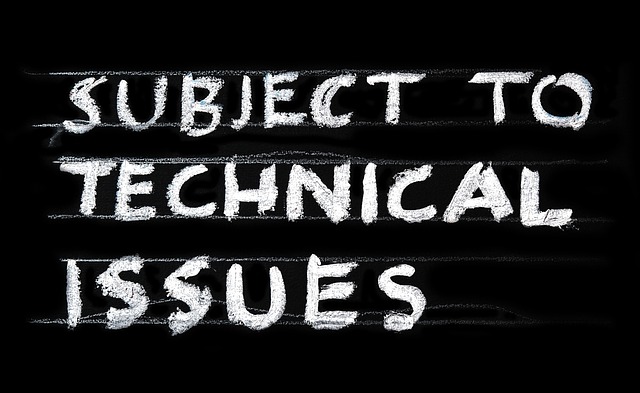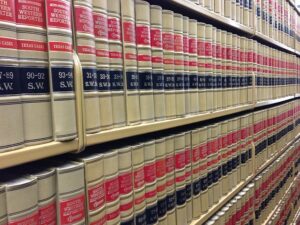Precision in Print: Mastering UK Technical Standards Through Expert Translation Services
Translation services specialized in UK Technical Guidelines and Standards play a pivotal role in ensuring that complex technical documents meet international compliance standards. These services are indispensable for accurately conveying the precise …….

Translation services specialized in UK Technical Guidelines and Standards play a pivotal role in ensuring that complex technical documents meet international compliance standards. These services are indispensable for accurately conveying the precise terminology, units of measurement, and procedural details inherent in British technical standards into various languages. Expert translators, proficient in both the source and target linguistic contexts and the specific technical lexicon, work to maintain the original intent and functionality of these documents across different cultures. Employing advanced technology and rigorous quality assurance protocols, including peer reviews and final editing stages, these translation services deliver accurate and reliable translations that are essential for global technical sectors. Their commitment to precision and industry-specific knowledge ensures that international collaboration and compliance are achieved without loss of critical information. This meticulous approach underscores the reliability and necessity of such specialized translation services in the globalized marketplace.
Navigating the complexities of UK technical guidelines and standards requires precise communication, a task that extends beyond linguistic boundaries. This article delves into the critical role of specialized translation services in ensuring accuracy within technical sectors. We will explore key factors for selecting a dependable service provider, the meticulous process of translating intricate documents, and real-world success stories. By focusing on translation services for UK Technical Guidelines and Standards, we aim to provide insights that underscore the importance of exactness in multilingual technical communications, guaranteeing clarity and reliability across diverse languages.
- Understanding the Importance of Accurate Translation for UK Technical Guidelines and Standards
- The Role of Specialised Translation Services in Technical Sectors
- Key Considerations for Choosing a Reliable Translation Service Provider
- The Process of Translating Complex Documents: A Step-by-Step Guide
- Case Studies: Successful Translations of UK Technical Guidelines and Standards
- Ensuring Consistency and Quality in Multilingual Technical Communications
Understanding the Importance of Accurate Translation for UK Technical Guidelines and Standards

Navigating UK technical guidelines and standards requires meticulous attention to detail, as these documents often serve as the foundation for compliance, safety, and performance in a wide array of industries. Accurate translation of these materials is paramount when they are to be understood and applied in different linguistic contexts. The precision of language used within technical standards, such as terminology, units of measurement, and procedural descriptions, can significantly impact the application’s efficacy and safety. As global businesses and organisations increasingly operate across borders, the demand for reliable translation services for UK technical guidelines and standards has grown exponentially. Expert translators with specialized knowledge in both the subject matter and linguistic nuances are essential to convey the exact meaning, ensuring that the translated content aligns with the original intent and technical accuracy. This not only safeguards against misinterpretation but also maintains compliance with international regulations and standards, thus upholding integrity and trust in a globalized marketplace. Engaging professional translation services for UK technical guidelines and standards is an investment in the reliability and effectiveness of multilingual operations.
The Role of Specialised Translation Services in Technical Sectors

When navigating the complex realm of UK technical guidelines and standards, precision in communication is paramount. Specialized translation services play a pivotal role in this context, offering meticulous translations that adhere to the intricate nuances and technical specificities within engineering, manufacturing, and IT sectors. These services are adept at converting UK Technical Guidelines and Standards into languages that accurately reflect their intent without compromising on clarity or technical accuracy. The expertise of these providers lies in their deep understanding of both the source and target languages, as well as the specialized terminology unique to technical fields. This ensures that all translated documents maintain their integrity and functionality across different linguistic and cultural contexts. Moreover, these translation services are equipped with industry-specific knowledge and a commitment to quality, which is essential for accurate conveyance of technical content. By leveraging cutting-edge technology and employing seasoned linguists, these services guarantee that UK Technical Guidelines and Standards are effectively communicated on the international stage, thereby facilitating seamless cross-border collaboration and compliance in global technical markets.
Key Considerations for Choosing a Reliable Translation Service Provider

When venturing into the realm of translating UK technical guidelines and standards, selecting a reliable translation service provider is paramount to ensure accuracy and compliance. The translated content must reflect the precise terminology and technical nuances present in the original documents. A proficient provider should possess a deep understanding of both the source and target languages, coupled with expertise in the relevant technical fields. This is crucial for maintaining the integrity of the guidelines and standards across different linguistic barriers.
Moreover, potential clients should scrutinize a translation service provider’s track record, particularly their experience with similar UK technical documents. It is advisable to opt for providers that have a proven history of handling such specialized translations, as they are likely to be well-versed in industry-specific jargon and terminology. Additionally, they should employ a robust quality assurance process, which includes the use of translation memory software and the involvement of subject matter experts to guarantee consistency and accuracy. By adhering to these key considerations, organizations can minimize errors and ensure their UK technical guidelines and standards are effectively communicated to an international audience.
The Process of Translating Complex Documents: A Step-by-Step Guide

When it comes to translating UK technical guidelines and standards, precision and accuracy are paramount. The process begins with selecting a translation service that specializes in technical content and has a deep understanding of both the source and target languages. A reputable service will assign subject matter experts who are not only linguists but also knowledgeable in the relevant technical fields to ensure terminology is correctly interpreted.
The first step involves a thorough review of the document by the translator, who identifies specialized terminology and technical jargon that requires precise translation. This phase often necessitates the use of glossaries or terminology databases specific to the UK’s technical guidelines and standards to maintain consistency throughout the text. Once the initial translation is complete, it undergoes a quality assurance process where the text is scrutinized for any linguistic nuances that may have been overlooked. This includes checking for grammatical correctness, adherence to the original meaning, and cultural relevance in the target language.
Following the initial review, the translation is then peer-reviewed by a second expert with experience in the same technical domain. This collaborative approach not only enhances the accuracy of the translation but also ensures that any industry-specific terminology or concepts are conveyed correctly. After this peer review, the translated document goes through a final editing stage where all changes are compared against the original to guarantee nothing has been altered or lost in translation.
Lastly, the translator implements any necessary corrections and adjustments. The final document is then proofread once again for fluency and coherence in the target language. Throughout this process, the translation service maintains close communication with the client to address any concerns or questions that arise. This meticulous step-by-step guide ensures that UK technical guidelines and standards are accurately translated, providing clients with reliable and error-free translations suitable for their purposes.
Case Studies: Successful Translations of UK Technical Guidelines and Standards

UK technical guidelines and standards often serve as a cornerstone for industries ranging from aerospace to healthcare, ensuring safety, efficiency, and compliance across various sectors. For global enterprises and organisations, translating these documents accurately is paramount to maintain integrity and functionality. A case in point is the successful translation of British Standards by a leading translation service provider. They adapted UK technical standards for an international electronics manufacturer, ensuring that the safety and performance specifications were conveyed precisely in Japanese, thereby enabling the manufacturer to comply with both local regulations and the original UK standards without compromise. Similarly, a multinational pharmaceutical company leveraged expert translation services to convert UK Good Manufacturing Practice (GMP) guidelines into Spanish and Mandarin. This facilitated seamless operations across their global manufacturing sites while upholding the high standards of quality control. These instances underscore the importance of selecting translation services with specialized expertise in technical documents, ensuring that the nuances and specificities of UK technical guidelines and standards are preserved in every target language.
Ensuring Consistency and Quality in Multilingual Technical Communications

When venturing into multilingual technical communications, consistency and quality are paramount to ensure clarity and reliability across different linguistic audiences. To achieve this, it is crucial to leverage specialized translation services that are adept at handling UK Technical Guidelines and Standards. These services employ expert translators who not only possess a deep understanding of the subject matter but are also well-versed in the nuances of both the source and target languages. This expertise is essential for maintaining the precision of technical terms, which can be highly specific and complex. Furthermore, these translation services implement advanced translation technologies and quality assurance processes to guarantee that the content reflects the original context and intent accurately. By doing so, they uphold the integrity of the UK’s technical guidelines and standards, ensuring that users from diverse linguistic backgrounds receive information that is both accurate and reliable, thereby fostering global comprehension and application of these critical documents.
In conclusion, navigating the complexities of UK technical guidelines and standards requires precision and expertise. Specialised translation services play a pivotal role in ensuring that these critical documents are conveyed accurately across languages, maintaining clarity, consistency, and quality. By choosing a reliable provider who understands the nuances of both language and technology, organisations can bridge communication gaps effectively. The detailed process outlined here underscores the importance of a meticulous approach to translating complex technical documents. With the right service, businesses can expand their reach confidently, knowing that their UK technical guidelines and standards are accurately represented in any language, thereby facilitating international compliance and understanding.







